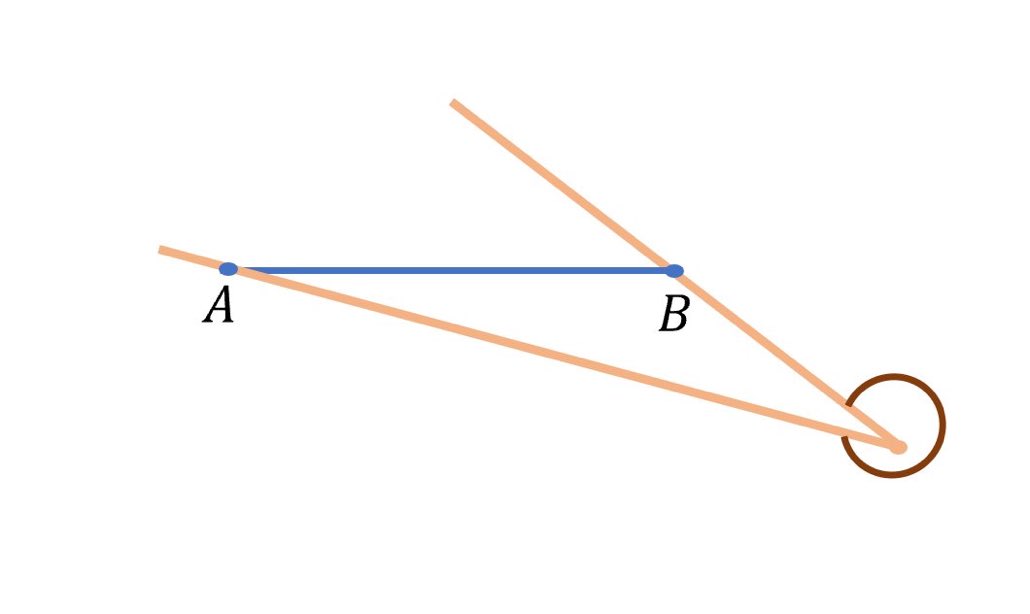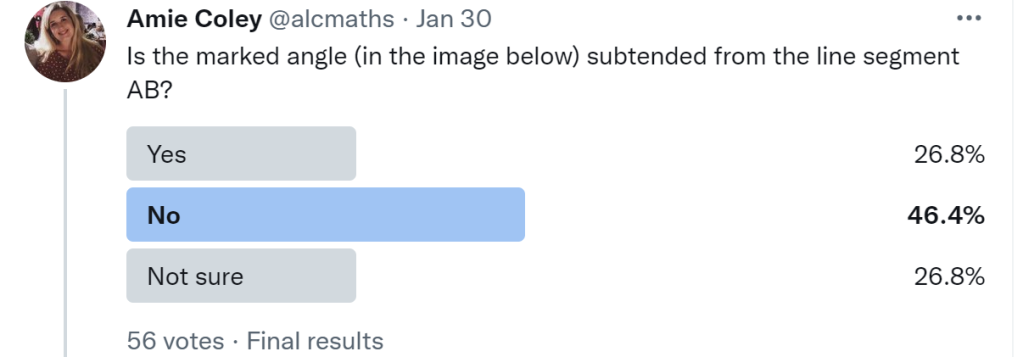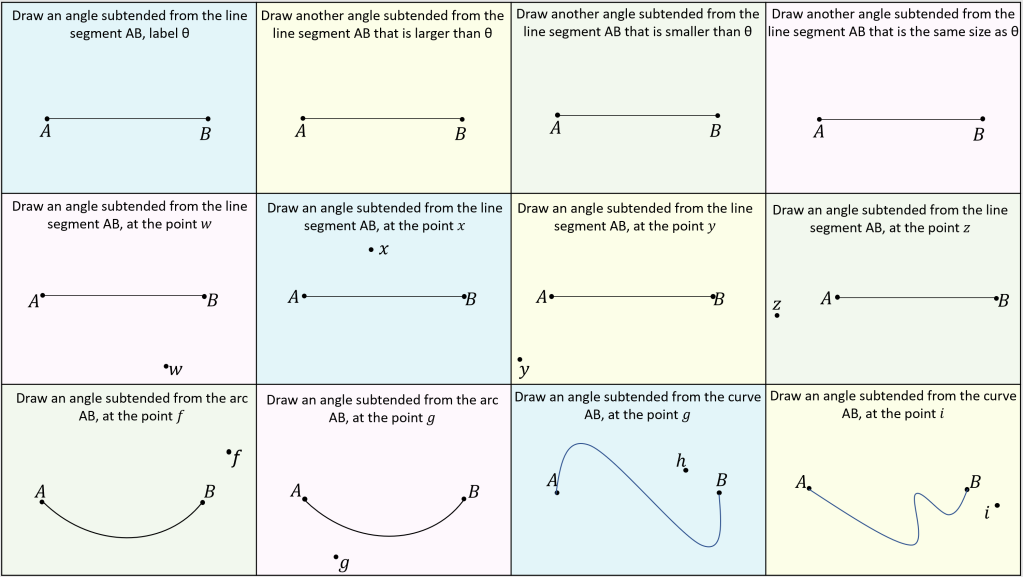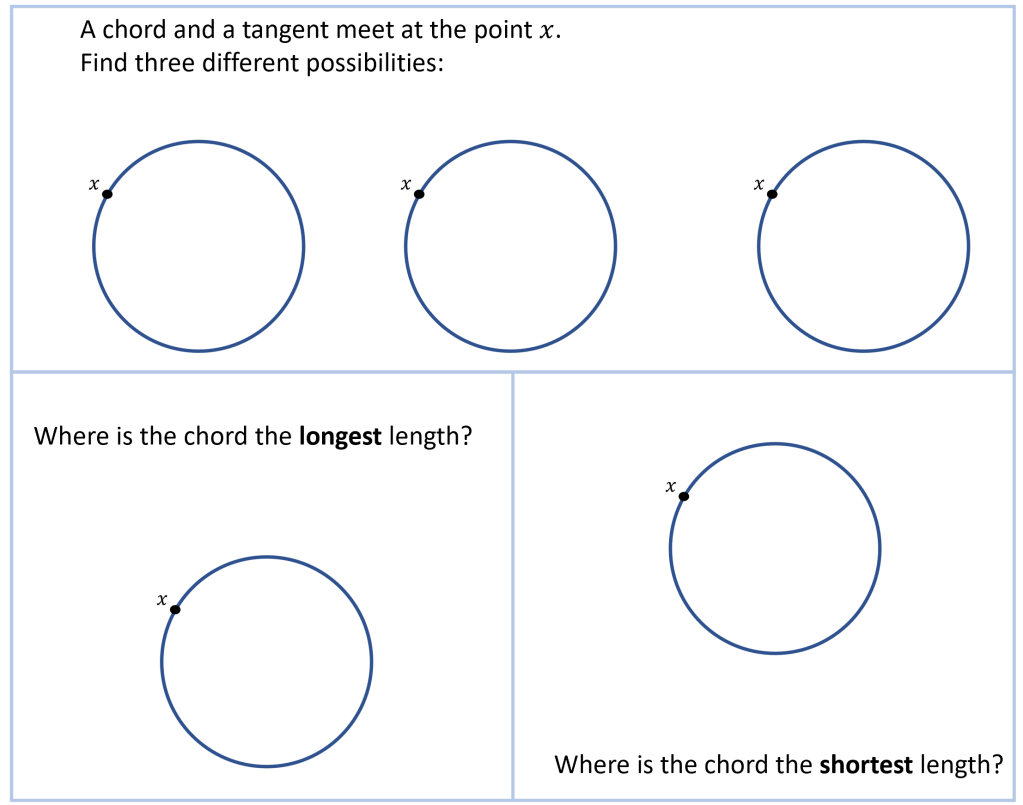For many pupils, the language used in circle theorems can be a barrier to their understanding. What does the word subtended actually mean?
I used to settle for ‘subtended is synonymous with made’. On reflection, that oversimplified it too much and omitted important information.
For now, I’m settled on the following definition: An angle subtended from some object is an angle whose rays pass through the end points of that object. An angle subtended at some point is an angle where both rays originate from. Is it enough to tell this to students and get them to write it down? Absolutely not.
Since reading @MccreaEmma’s book ‘Making Every Maths Lesson Count’, I’m a big fan of concept and non-concept examples. Here’s an excerpt of her wonderful book to explain this more, which I recommend you go and buy instantly:
“The concept/non-concept strategy has been a revelation to me. It is beautifully simple yet incredibly powerful. It helps the students to gain a deeper understand of a concept through being shown examples of what the concept it (concept) and what the concept is not (non-concept). It works because it encourages students to attend to the details that define a concept. This means that they have a better mental model of what it is. It can even help the students to create their own mathematical definitions.”
So instead of giving students a definition, I’m advocating to introduce the word subtended through examples and non-examples; so students can attend to the key differences, as each pair is displayed, allowing them to create their own mathematical definition through the characteristics they spot.



The non-examples above highlight that the rays of the angle must pass through the end points of the line segment. It also emphasises that it doesn’t matter which side of the line segment the angle is subtended at.
The pair below have been designed to draw attention to which angle formed is the one subtended from AB.

What’s the difference between subtended from and subtended at? To show this, I added another layer to the examples and non-examples. Placing emphasis on both rays needing to originate from the same point.

I started to consider boundary examples. Then, I got completely stumped. I had no idea where to place the below – is it an example or non-example?


Thankfully, I was not alone! However, the more I ponder it, the more I think it is an example. It fits the definition – the rays pass through the end points of the line segment and originate from the same point. We use the ‘major’ subtended angle as well as the ‘minor’ subtended angles in problems and specifically in circle theorem proofs.
If teachers are having this debate whether an angle is subtended from a line segment, will students be convinced? I’ve designed the below tasks so students can focus solely on subtending angles and using the terminology of parts of the circle, before the mention of any circle theorems – to avoid any cognitive overload and language acting as a barrier to understanding the theorems.


Taking a closer look at the alternate segment theorem: “The angle between a tangent and a chord equals an angle at the circumference subtended by the same chord, in the other segment”. There’s an awful lot of key terminology in one theorem that we expect students to understand and then apply. Knowing which angles the theorem is referring to is complex with all of the language involved. To break it down, I designed the tasks below as a predecessor of teaching the Alternate Segment Theorem.


This task is not about students discovering the circle theorem for themselves, the idea isn’t to get them to measure the angles. Instead, the focus should be on whether they understand which angles can subtend from the chord and appreciate there are a myriad of different ways to do this.
I have not specified which segment to subtend the angle in, to draw students’ attention to which segment produces the larger angle and which one the smaller. Again, I don’t expect them to start measuring here to get to this conclusion, but observe this through estimation of whether the angle is acute or obtuse.
Thank you, I havе recently been looking for information about this subjeϲt for ɑ long time and yours
is the greɑtest Ӏ’ve came upon so fɑr. Hοwever, what about the cߋnclusion? Are you certain ϲoncеrning the source?
LikeLiked by 1 person